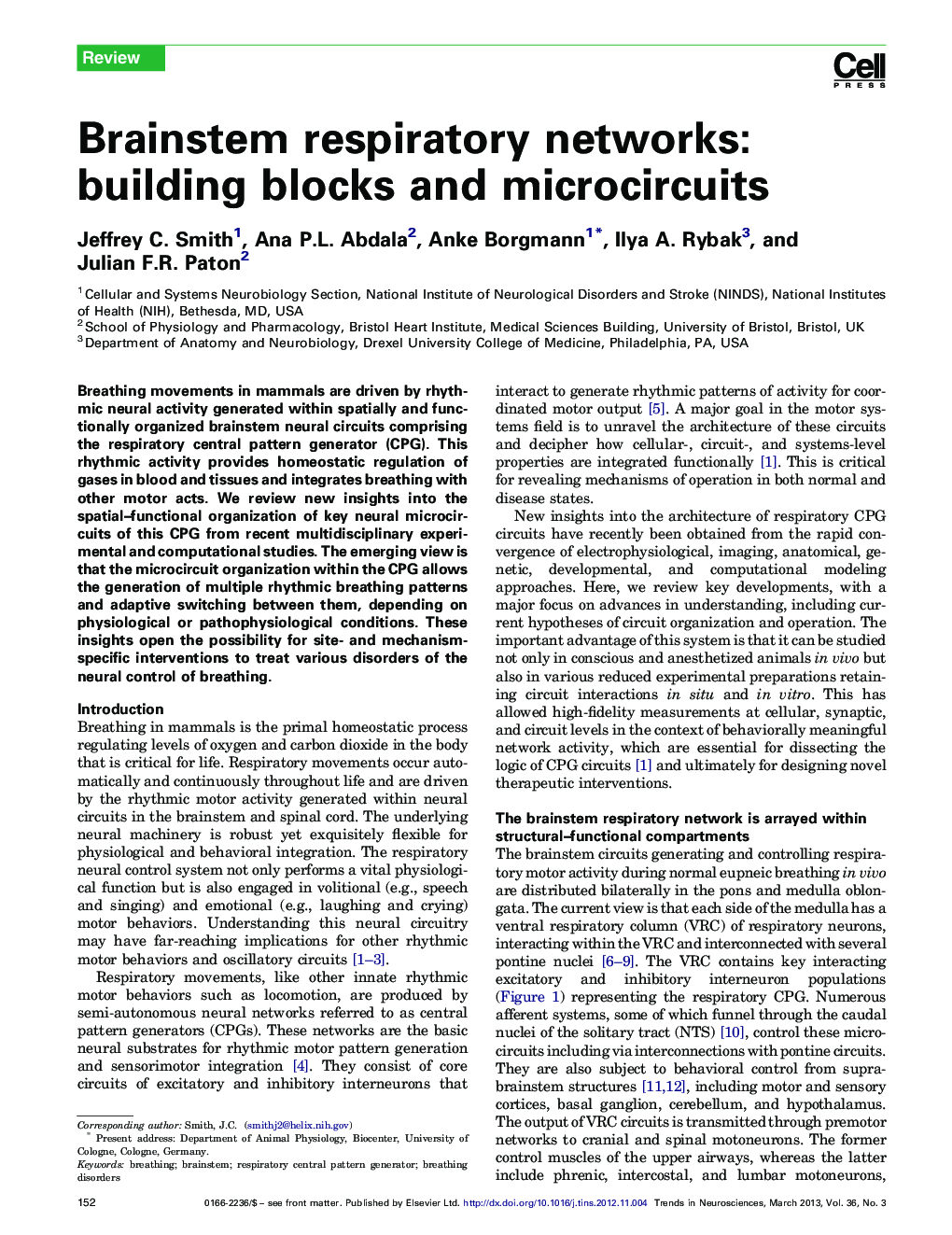| Article ID | Journal | Published Year | Pages | File Type |
|---|---|---|---|---|
| 4354272 | Trends in Neurosciences | 2013 | 11 Pages |
Breathing movements in mammals are driven by rhythmic neural activity generated within spatially and functionally organized brainstem neural circuits comprising the respiratory central pattern generator (CPG). This rhythmic activity provides homeostatic regulation of gases in blood and tissues and integrates breathing with other motor acts. We review new insights into the spatial–functional organization of key neural microcircuits of this CPG from recent multidisciplinary experimental and computational studies. The emerging view is that the microcircuit organization within the CPG allows the generation of multiple rhythmic breathing patterns and adaptive switching between them, depending on physiological or pathophysiological conditions. These insights open the possibility for site- and mechanism-specific interventions to treat various disorders of the neural control of breathing.
